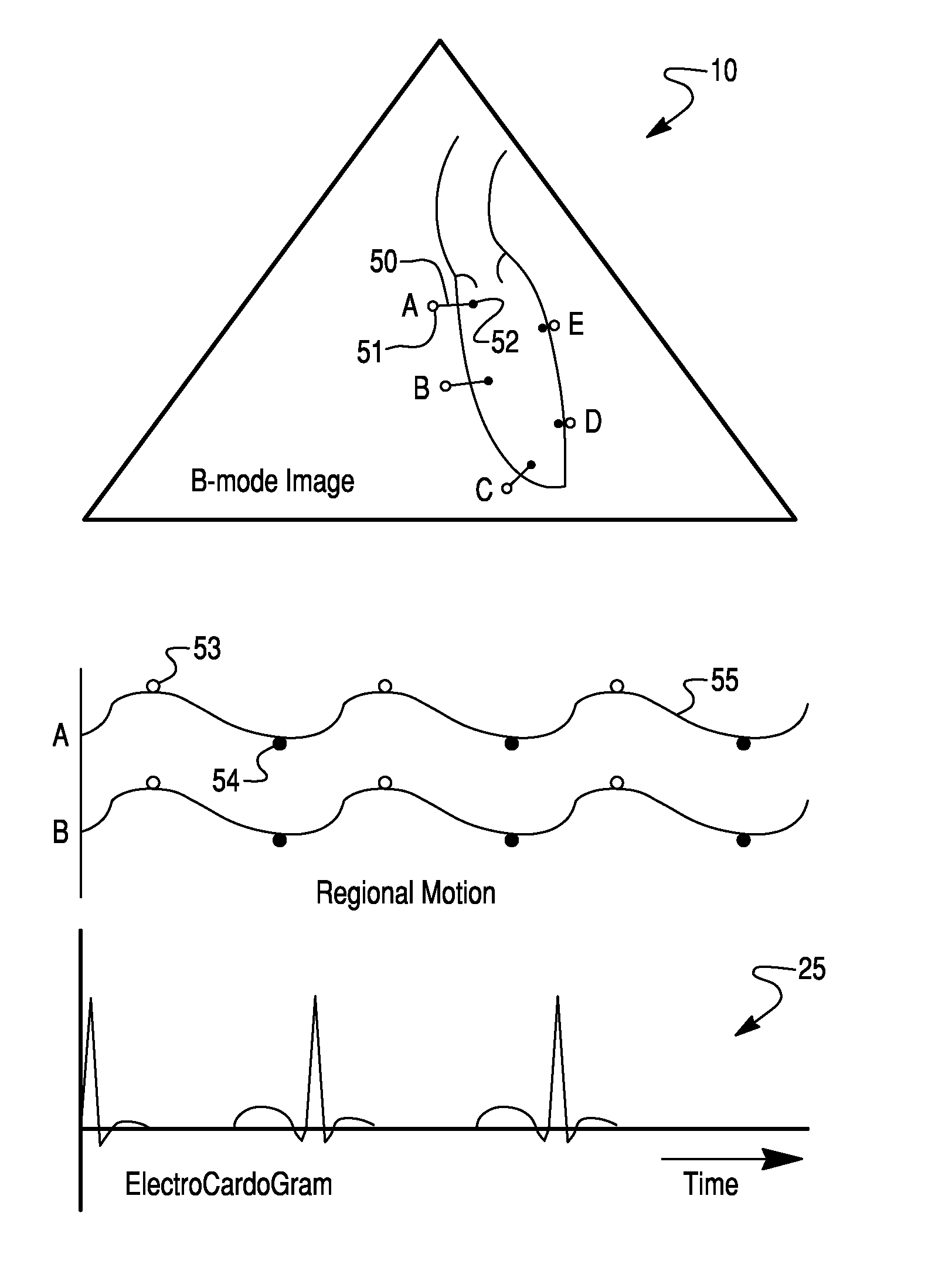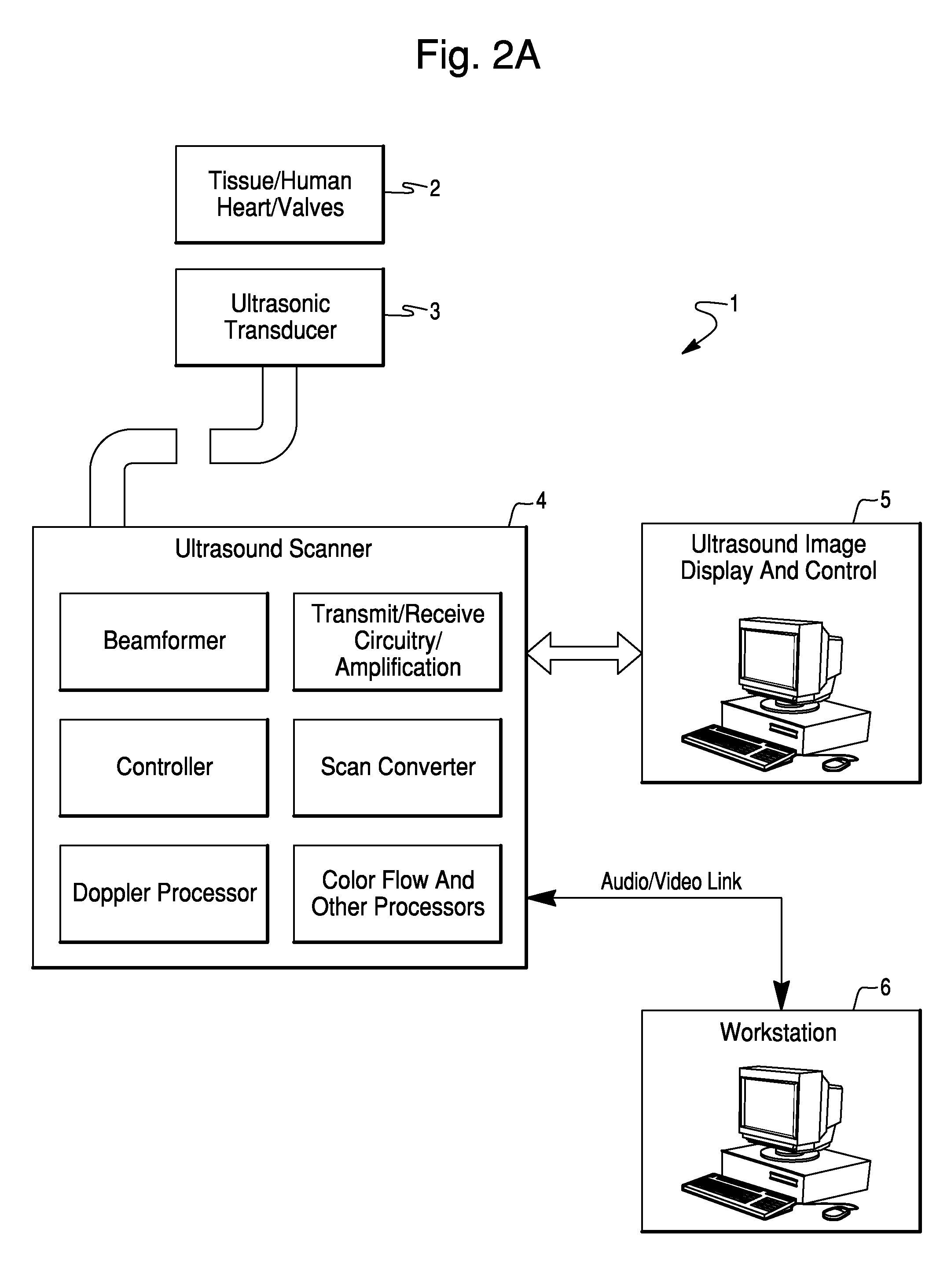Method and System For Estimating Cardiac Ejection Volume And Placing Pacemaker Electrodes Using Speckle Tracking
a technology of ejection volume and tracking pattern, applied in the field of estimating cardiac ejection volume and placing pacemaker electrodes using speckle tracking pattern, can solve the problems of limiting the range and effectiveness of possible measurements, limiting the accuracy of measurement, and limiting the frequency of interrogation and angle of view, so as to reduce duplication of demographic data and eliminate input errors
- Summary
- Abstract
- Description
- Claims
- Application Information
AI Technical Summary
Benefits of technology
Problems solved by technology
Method used
Image
Examples
Embodiment Construction
[0025] Heart failure is a disease where the heart's main function, a pump for blood, is wearing down. The heart tissue can absorb fluid, the left ventricle does not allow quick electrical conduction, becomes enlarged, does not contract well, and becomes less efficient at pumping blood. A measurement for the cardiac output (volume of ejected blood) is called the “ejection volume”. The efficiency of the heart as a pump is called the “ejection fraction” or “EF”. EF is measured as the percentage of the blood volume contained in the ventricles that is pumped out with each beat of the heart. A healthy, young heart will have an EF greater than 90 (i.e., 90 percent of the ventricular blood is pumped with each heart beat); an older, sick heart in heart failure can have an EF less than 30. Heart failure leads to an extremely diminished lifestyle, and, left untreated, can be a major cause of mortality.
[0026] A new therapy to treat heart failure is bi-ventricular pacing, or “resynchronization”...
PUM
 Login to View More
Login to View More Abstract
Description
Claims
Application Information
 Login to View More
Login to View More - R&D
- Intellectual Property
- Life Sciences
- Materials
- Tech Scout
- Unparalleled Data Quality
- Higher Quality Content
- 60% Fewer Hallucinations
Browse by: Latest US Patents, China's latest patents, Technical Efficacy Thesaurus, Application Domain, Technology Topic, Popular Technical Reports.
© 2025 PatSnap. All rights reserved.Legal|Privacy policy|Modern Slavery Act Transparency Statement|Sitemap|About US| Contact US: help@patsnap.com



